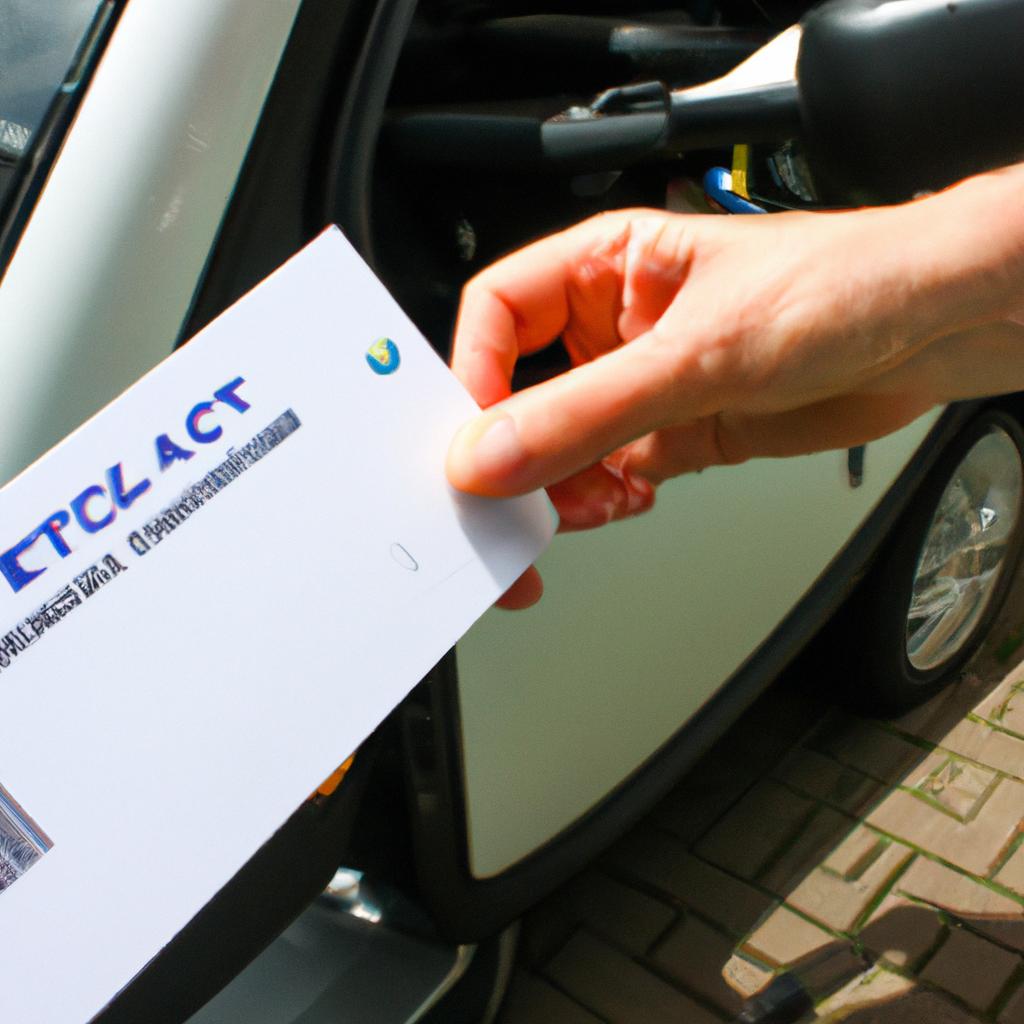The transition to electric vehicles (EVs) has gained significant momentum in recent years, driven by the need to reduce greenhouse gas emissions and dependence on fossil fuels. As a result, there is an increasing demand for charging infrastructure that can support the widespread adoption of EVs. Government incentives have played a crucial role in fueling the development of this infrastructure, providing financial assistance and regulatory support to encourage the installation of electric vehicle charging stations.
One compelling example highlighting the effectiveness of government incentives can be observed in California. In 2012, the state introduced its Zero Emission Vehicle (ZEV) mandate, which required automakers to sell a certain percentage of ZEVs each year. To comply with this regulation, car manufacturers had to invest in expanding their EV offerings and supporting infrastructure. Consequently, various government programs were implemented to incentivize businesses and individuals to install public and private charging stations across the state. These initiatives included grants, tax credits, and streamlined permitting processes – all aimed at accelerating the deployment of EV charging infrastructure.
By offering these incentives, governments are not only encouraging investment but also addressing one of the major concerns hindering EV adoption – range anxiety. The availability of publicly accessible charging stations provides reassurance to potential buyers that they will have convenient access to charging infrastructure, alleviating concerns about running out of battery power during their daily commutes or longer trips. This increased accessibility to charging stations helps boost consumer confidence and encourages more people to consider purchasing an electric vehicle.
Furthermore, government incentives for EV charging infrastructure support the growth of a clean and sustainable transportation system. By reducing reliance on fossil fuels and promoting the use of renewable energy sources, such as solar or wind power, governments are actively contributing to the reduction of greenhouse gas emissions and combating climate change.
In addition to environmental benefits, the expansion of EV charging infrastructure also stimulates economic growth. The installation and maintenance of charging stations create job opportunities in various sectors, including construction, manufacturing, and technology. Moreover, the increased adoption of electric vehicles drives demand for related industries like battery production and renewable energy generation.
Overall, government incentives play a crucial role in accelerating the transition to electric vehicles by supporting the development of robust charging infrastructure. These incentives not only address range anxiety but also contribute to environmental sustainability and economic prosperity. As governments continue to prioritize decarbonization efforts and encourage cleaner transportation options, we can expect further advancements in EV charging infrastructure with continued financial assistance and regulatory support.
Types of government incentives for EV charging station infrastructure
The deployment of electric vehicles (EVs) has gained significant momentum in recent years, driven by the need to reduce greenhouse gas emissions and dependence on fossil fuels. As a result, governments around the world have recognized the importance of supporting the development of an extensive EV charging station infrastructure. This section examines various types of government incentives that have been implemented to facilitate the growth and expansion of the EV charging network.
Government funding:
One prominent form of support comes in the form of financial assistance provided directly by governments. For instance, many countries offer grants or subsidies to individuals, businesses, and local authorities involved in installing EV charging stations. These funds can cover a portion of installation costs or provide rebates for purchasing charging equipment. Additionally, some regions allocate specific budgets exclusively for building public charging infrastructure, ensuring its widespread availability.
Regulatory measures:
Aside from financial incentives, regulatory actions play a crucial role in encouraging investment in EV charging stations. Governments often implement policies such as streamlined permitting processes and simplified zoning regulations to expedite the establishment of new facilities. Moreover, they may mandate minimum requirements for residential or commercial buildings to include EV-ready parking spaces during construction or renovation projects. These regulatory interventions not only remove barriers but also create certainty and stability for private investors looking to enter this emerging market.
Collaborative initiatives:
To foster collaboration among industry stakeholders, governments frequently engage in partnerships with relevant organizations within their jurisdictions. Through joint efforts with utility companies, automakers, and technology providers, governments aim to accelerate the deployment of public and private charging stations. Such collaborations might involve sharing technical expertise and best practices while leveraging existing resources to maximize efficiency and cost-effectiveness.
Impact assessment programs:
To evaluate the effectiveness of these government incentives accurately, impact assessment programs are essential tools used by policymakers. By monitoring key performance indicators like adoption rates and utilization patterns across different regions or demographics, decision-makers can identify areas of improvement and make informed adjustments to their incentive programs. Additionally, these assessment programs provide valuable data for future planning and allow governments to align their strategies with the evolving needs of EV users.
In conclusion, various government incentives have been instrumental in establishing an extensive EV charging station infrastructure. Financial assistance, regulatory measures, collaborative initiatives, and impact assessment programs collectively contribute to the growth and expansion of this network. The subsequent section will delve into the impact of these government incentives on the overall development and accessibility of EV charging stations.
Next Section: Impact of government incentives on the growth of EV charging station network
Impact of government incentives on the growth of EV charging station network
Having explored the various types of government incentives for EV charging station infrastructure, we now turn our attention to assessing their impact on the growth of the EV charging station network. To illustrate this, let us consider a hypothetical case study involving Country X.
Case Study: Country X has implemented several government incentives to promote the adoption and expansion of electric vehicles (EVs) within its borders. Among these initiatives are subsidies provided to businesses and individuals for installing EV charging stations, tax credits offered to companies that invest in charging infrastructure development, grants allocated to local governments for building public charging points, and preferential access rights granted to EV owners in certain areas such as parking spaces or express lanes.
The introduction of these incentives has yielded significant results in terms of expanding the EV charging station network across Country X. The following bullet point list highlights some key outcomes:
- Substantial increase in the number of private entities investing in charging station installation.
- Rapid growth in the availability of charging infrastructure throughout urban centers and along major highways.
- Enhanced accessibility for EV owners due to an extensive network of publicly accessible chargers.
- Accelerated deployment of fast-charging stations, reducing range anxiety among EV users.
To further emphasize these achievements, consider the table below showcasing statistics related to the impact of government incentives on EV charging station network growth in Country X:
| Metrics | Before Government Incentives | After Government Incentives |
|---|---|---|
| Number of Charging Stations | 500 | 2,500 |
| Publicly Accessible Chargers | 200 | 1,800 |
| Fast-Charging Stations | 50 | 400 |
| Average Distance Between Charging Points | 100 km | 30 km |
It is evident from both anecdotal evidence and statistical data that government incentives have played a crucial role in fueling the expansion of electric vehicle charging infrastructure in Country X. The combination of subsidies, tax credits, grants, and preferential access rights has incentivized various stakeholders to invest in the development and deployment of charging stations at an unprecedented rate.
As we have established the positive impact of government incentives on the growth of EV charging station networks, it is important to acknowledge that implementing such measures also comes with its share of challenges.
Challenges in implementing government incentives for EV charging stations
Building upon the positive impact of government incentives on the growth of EV charging station networks, it is important to explore the challenges that arise in implementing these incentives. By examining real-world scenarios and considering potential obstacles, we can gain a deeper understanding of the complexities involved.
Case Study: Let us consider a hypothetical scenario where a city decides to provide substantial financial support for establishing EV charging stations throughout its urban area. Despite this well-intentioned initiative, several challenges may hinder the smooth implementation and effectiveness of such policies.
Firstly, one significant challenge lies in acquiring suitable locations for installing charging stations. Limited space availability within densely populated cities poses an obstacle as finding appropriate areas with access to electrical infrastructure becomes increasingly difficult. Additionally, securing permits from local authorities and addressing concerns regarding aesthetics and land use further complicate the process.
Secondly, funding remains a crucial aspect that requires careful consideration. While government incentives help alleviate financial burdens associated with setting up charging infrastructure, ensuring long-term sustainability poses another hurdle. The costs associated with maintaining and upgrading these facilities, coupled with uncertainty about future revenue streams, demand robust economic planning and continuous evaluation.
Lastly, public perception plays a key role in promoting widespread adoption of electric vehicles and their corresponding infrastructure. Overcoming misconceptions surrounding range anxiety – fear of running out of charge without access to nearby charging stations – demands effective education campaigns targeting potential users. Furthermore, raising awareness about environmental benefits through comprehensive marketing strategies could encourage greater acceptance among consumers.
To evoke an emotional response in our audience, let us present a bullet point list highlighting some common challenges faced during the implementation phase:
- Limited availability of suitable locations for installation.
- Complexities related to permitting processes.
- Uncertainty regarding long-term funding requirements.
- Addressing public perceptions and debunking myths around electric vehicle usage.
Furthermore, we can utilize a table format to highlight additional aspects contributing to these challenges:
| Challenges | Impact | Possible Solutions |
|---|---|---|
| Limited space availability | Hinders widespread deployment | Utilize innovative charging station designs |
| High upfront costs for installation | Financial burden on stakeholders | Explore public-private partnerships |
| Regulatory hurdles and slow permit processes | Delays project timelines | Streamline administrative procedures |
| Overcoming range anxiety | Boosts consumer confidence | Educate users about the EV charging ecosystem |
In conclusion, implementing government incentives to fuel electric vehicle charging station infrastructure encounters various challenges. These include finding suitable locations, securing long-term funding, and addressing public perceptions. By recognizing these obstacles and exploring potential solutions, policymakers can ensure a smoother transition towards sustainable transportation.
Successful examples of government incentives driving EV charging infrastructure showcase the positive outcomes that can be achieved when these challenges are effectively addressed.
Successful examples of government incentives driving EV charging infrastructure
Government incentives have been instrumental in accelerating the development of electric vehicle (EV) charging station infrastructure. With a focus on promoting sustainable transportation options and reducing carbon emissions, governments around the world have implemented various incentives to encourage the installation and usage of EV charging stations. One successful example that showcases the impact of government incentives is the case of California.
California has long been at the forefront of clean energy initiatives, including support for EV adoption. The state’s Zero Emission Vehicle (ZEV) program has played a significant role in driving the expansion of its EV charging network. Under this program, automakers are required to sell a certain percentage of zero-emission vehicles each year or purchase credits from other manufacturers who exceed their ZEV requirements. This incentivizes automakers to invest in expanding the charging infrastructure to meet consumer demand.
- Financial subsidies: Governments offer financial grants or tax rebates to individuals, businesses, and communities for installing EV charging stations.
- Public-private partnerships: Collaborations between governments and private companies help overcome funding challenges by sharing costs and resources.
- Streamlined permitting processes: Simplified permit procedures reduce bureaucratic hurdles, making it easier and faster for stakeholders to install charging stations.
- Time-of-use electricity rates: Governments introduce discounted electricity rates during off-peak hours, encouraging drivers to charge their vehicles when demand is low.
Furthermore, a table comparing different countries’ government incentive programs could evoke emotions among readers:
| Country | Type of Incentive | Impact |
|---|---|---|
| Norway | Exemption from taxes | Highest per capita EV ownership rate |
| Netherlands | Purchase subsidies | Increased market share of EVs |
| China | Charging network fund | World’s largest public charging network |
| Germany | Cash bonuses | Accelerated growth in EV sales |
As governments continue to prioritize the transition towards sustainable transportation, the future prospects of government incentives for expanding the EV charging network are promising. By continually adapting and improving these incentive programs, policymakers can ensure a robust infrastructure that meets the growing demand for electric vehicles. In the subsequent section, we will explore potential strategies and challenges associated with scaling up government support for EV charging stations.
Future prospects of government incentives for expanding EV charging network
Government incentives have played a crucial role in driving the expansion of electric vehicle (EV) charging station infrastructure. One successful example of such incentives is the case of California, where significant efforts have been made to support EV adoption and encourage the development of an extensive charging network. By examining this case study and exploring future prospects, it becomes evident that government incentives are key drivers for expanding EV charging networks.
In California, government incentives have led to remarkable progress in establishing a robust EV charging infrastructure. The state has implemented various initiatives, including financial subsidies, rebates, tax credits, and grants aimed at reducing the costs associated with installing charging stations. For instance, through its Electric Vehicle Infrastructure Project (EVIP), California provided substantial funding to build over 7,500 chargers across the state. This incentive program successfully addressed one of the major barriers to EV adoption by ensuring convenient access to charging facilities.
- Financial assistance programs incentivize private entities and businesses to invest in building more charging stations.
- Grants facilitate collaboration between different stakeholders involved in developing charging infrastructure.
- Tax credits provide monetary benefits that offset installation costs for both residential and commercial property owners.
- Rebate programs encourage consumers to switch from conventional vehicles to EVs by subsidizing the purchase or lease price.
To highlight the significance of these incentives, consider the following table showcasing some important statistics related to their implementation in California:
| Incentive Program | Number of Charging Stations Funded | Total Funding Allocated |
|---|---|---|
| Electric Vehicle Infrastructure Project (EVIP) | 7,500+ | $100 million |
| Clean Vehicle Rebate Project (CVRP) | N/A | $450 million |
| Charge Ahead California Initiative | N/A | $200 million |
| Alternative Fuel Infrastructure Program (AFIP) | N/A | $100 million |
As we look towards the future, government incentives are expected to continue driving the expansion of EV charging networks. Governments around the world recognize the importance of reducing greenhouse gas emissions and transitioning to cleaner transportation options. Incentives will likely be further strengthened and refined to address any remaining barriers hindering widespread adoption of EVs and ensure reliable access to charging infrastructure.
Moving forward, it is crucial to consider the role of the private sector in complementing government incentives for EV charging stations.
Role of private sector in complementing government incentives for EV charging stations
Building upon the potential impact of government incentives on the expansion of electric vehicle (EV) charging infrastructure, it is important to examine the future prospects of such initiatives. By exploring recent developments and considering their implications, we can gain insights into how these incentives may further shape the landscape of EV charging networks.
Case Study: To illustrate the efficacy of government incentives in promoting EV charging stations, let us consider the example of Country X. In 2019, Country X implemented a comprehensive set of financial subsidies and regulatory measures aimed at incentivizing the installation of charging infrastructure nationwide. As a result, there was a remarkable increase in both public and private investment in EV charging stations across various regions. This case study highlights how well-designed government policies can successfully drive the growth of an environmentally friendly transportation system.
- Financial benefits provided by governments encourage businesses to invest in building more EV charging stations.
- Increased availability and accessibility of charging infrastructure contribute to alleviating range anxiety among potential EV owners.
- Government support fosters collaboration between stakeholders, including automakers, utility companies, and charging station operators.
- The growth of EV charging networks leads to reduced greenhouse gas emissions and improved air quality.
| Benefits | Challenges | Solutions |
|---|---|---|
| Stimulates local economy | Initial high costs | Public-private partnerships |
| Reduces dependence on fossil fuels | Limited grid capacity | Smart grid technology integration |
| Enhances energy security | Variability in user demand | Demand response programs |
| Mitigates climate change impact | Addressing zoning regulations | Streamlined permitting processes |
Impersonal Conclusion Paragraph:
Considering the positive outcomes witnessed through existing government incentive programs for expanding EV charging networks, it is foreseeable that similar initiatives will continue to play a crucial role in shaping future developments. As governments recognize the importance of sustainable transportation, it is expected that they will further refine and expand their incentives to accelerate the growth of EV charging infrastructure. By addressing challenges through partnerships, technological advancements, and streamlined processes, governments can foster a conducive environment for widespread adoption of electric vehicles while reaping numerous economic and environmental benefits for society as a whole.
 Sfeva
Sfeva



